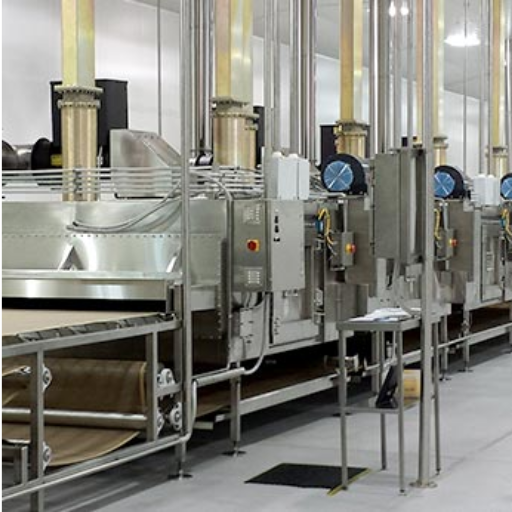For a long time, healthcare has been challenged by medical waste management because improper disposal can result in serious public health and environmental problems. Incineration and chemical disinfection are the traditional ways of treating medical waste, but they also carry disadvantages, including air pollution and chemical hazards. However, technology has made it possible to have more sustainable and effective methods in place. An example of such an innovative technique is where microwave disinfection systems come into play. This paper looks at the transformative power of microwave disinfection technology in managing medical waste by highlighting its safer, environmentally friendly, cheaper method than the conventional ones. By looking at how this technology works from a theoretical perspective, for what reasons we should adopt it? as well as its actual use in different scenarios, we can develop a detailed knowledge of how it changes the practices used in the treatment and management of biomedical wastes regarding principles underlying microwave disinfection and its benefits in general terms.
What is a Microwave Disinfection System?
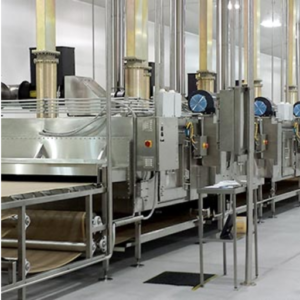
Image source: https://industrialmicrowave.com/
A microwave disinfection plant is a modern technology that treats and sterilizes medical waste. It employs microwave radiation to create heat from within the refuse, eliminating pathogens and other harmful microorganisms. Unlike conventional means, this technique does not depend on combustion or chemicals; thus, it is more sustainable. The procedure includes separating garbage into smaller pieces for exposure to controlled microwaves. Through this manner, adequate disinfection is achieved, the quantity of waste is reduced, and hazardous emissions are avoided, thereby providing better, safer medical waste management alternatives for sustainability.
Understanding Microwave Disinfection
Microwave disinfection functions by using microwave radiation to produce heat inside the medical rubbish, thereby killing pathogens. On its part, Microwave systems used for disinfection will heat waste internally until the proteins in it begin to denature and disrupt cellular structures, guaranteeing total sterilization. This process primarily involves shredding the waste before anything else because it ensures good microwave penetration into the material and significantly reduces its size. In contrast, This technology also uses no harmful chemicals and thus minimizes the release of toxic effluents, which might have posed health risks, thereby providing an alternative solution to incineration with environmental sustainability. The system is efficient and effective at managing medical waste; it is safe and eco-friendly, too.
How Does Microwave Technology Disinfect Medical Waste?
To understand how microwave technology can disinfect medical waste, it is necessary to consider the specific steps and mechanisms involved. The initial step consists of breaking up the waste into small parts, thus facilitating the penetration of microwaves into it. The shredded waste is then subjected to microwave radiation, typically around 2.45 GHz. This radiation causes internal heating by exciting water molecules in the waste, leading to temperatures sufficient for denaturing proteins and eventually destroying cellular structures in pathogens. With this heating happening inside, all portions of the wastage are adequately exposed to sterilization. Being efficient and emitting fewer poisonous gases, microwave disinfection has become an improved choice for traditional approaches like incineration or chemical treatments.
Critical Components of a Microwave Disinfection System
Microwave disinfection uses some components in order for medical waste to be effectively sterilized. These components are:
- Shredder: This piece of equipment decomposes medical refuse into smaller pieces to facilitate ease of handling. It increases the surface area, thus allowing microwave penetration and improving disinfection.
- Conveying System: Waste gets transported into a microwave chamber after it has been shredded using a conveyor system. This form of mechanization ensures the processing continues uninterrupted with uniform feed material.
- Microwave Chamber: The central unit of the system, generating radiation usually at frequencies around 2.45 GHz. As a result, this radiation heats water molecules within the waste, killing germs and denaturing proteins to render them sterile.
- Cooling System: A cooling system reduces the temperature of these processed wastes after they have been treated in microwaves. This stage allows for the safe disposal and handling of treated waste materials.
- Control Unit: For efficient running and safety, an advanced control unit monitors and regulates all activities involved in the process. It also has sensors and automated features, ensuring maximum efficiency and reliability.
Through their collaboration, these parts offer an inclusive approach to medical waste disinfection characterized by environmental friendliness and safety standards that are upheld accordingly.
How Effective is Microwave Disinfection for Medical Waste?
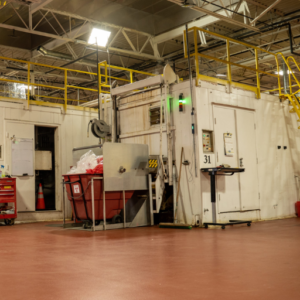
Microwave keeping clean for medicinal waste is very effective and has many benefits compared to traditional methods. For example, some studies have shown that microwave disinfection can be used to lower the level of pathogen inactivation, with a few systems attaining as much as a 99.9999% reduction in microbial burden. Consequently, this is mainly because microwave radiation can evenly heat and permeate across the litter, guaranteeing complete sterilization.
Moreover, they are environment-friendly since they do not produce harmful gases or other dangerous by-products. On the contrary, incinerators release pollutants into the atmosphere, while microwaving operates under a closed system that has minimal effects on the surroundings. Furthermore, it is relatively fast, with treatment times significantly less than those of other modes, thus leading to enhanced processing capability.
In conclusion, microwave sterilization is an efficient, reliable, and environmentally friendly means of dealing with medical garbage, making it preferable among hospitals. Its ability to meet strict regulatory requirements and handle different types and quantities of waste emphasizes its efficacy in maintaining safe, sanitary conditions.
Efficiency of Microwave Sterilization
Microwave sterilization is recognized for its efficiency in medical waste treatment. According to reliable sources, this method can disinfect within a short time and even total sterilization. Using microwaves, the technology raises the temperature of the wastes, killing germs that cannot survive under such temperatures. This technique is equal to or better than traditional methods like incineration or autoclaving because it often decreases microbial load by 99.9999%. The systems also help handle different types and quantities of waste to improve processing efficiency and adaptability in healthcare settings. The overall effectiveness of medical waste management will be much better when microwave sterilizations are used because environmental advantages combine with energy savings resulting from reduced treatment times and lesser energy use.
Benefits of Using Microwave Energy
When used in medical waste management, microwave energy has many advantages. First and foremost, it reduces the volume of these wastes, making it easy to dispose of and cheap. Additionally, microwave treatment effectively neutralizes a wide range of pathogens, ensuring a high level of disinfection that meets regulatory standards. It should also be noted that this process is environmentally friendly since it emits fewer gasses than incineration, thus reducing carbon footprint. Microwave systems are also relatively easy to operate and maintain, leading to reduced operational costs and increased reliability. Finally, microwave sterilization speed is unmatched, which means more processing times and higher throughput, thus enabling healthcare facilities to manage their waste better.
Comparing Microwave Disinfection to Other Methods
Several notable differences exist between microwave disinfection and other medical waste management strategies. Another commonly used method is traditional autoclaving, which uses pressure steam to sterilize. Although effective, autoclaving takes longer processing times and consumes more energy. On the contrary, microwave disinfection has faster processing and less energy utilization, thus resulting in cost-effectiveness and better efficiency. Incineration, on its part, entails burning medical waste at high temperatures.
Nevertheless, incineration has significant emissions that require complex emission control systems in dealing with environmental pollution because it burns all wastes effectively. This method of healthcare waste disposal leads to less waste being produced in the environment compared to massive emissions from incineration. Sodium hypochlorite is an example of a chemical disinfectant that can kill germs; however, these substances are highly toxic and need special handling during use and disposal. Instead of using harmful chemicals like the above-mentioned ones that must be handled with care in healthcare facilities, microwave systems offer a safer solution for health facilities by not using such substances, eliminating safety hazards altogether.
What Types of Waste Can Be Treated with Microwave Technology?
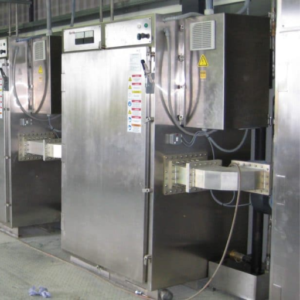
Various medical waste types can be effectively treated using microwave technology, including infective and pathological waste such as used dressings, bandages, and tissues. Similarly, it is equipped to handle sharps like needles and scalpels after proper containment. It also processes small medical implements besides laboratory waste, which may contain bodily fluids or other biological materials. Such are the ones that microwave disinfection effectively gets rid of pathogens for various healthcare facilities.
Handling Infectious and Biomedical Waste
Strict measures must be taken when handling infectious and medical waste to ensure it is safe and contamination-free. The first step is separating waste at the point of production to differentiate between hazardous and non-hazardous materials. Use different colored containers and labels so the separation can be done correctly. Also, personal protective equipment like gloves, masks, and gowns should be used when handling patients to minimize infections.
In relation to storage and transportation, make sure that waste containers do not leak or puncture easily. Among other things, there should be an area designated for storing such stuff that is secure enough away from the areas where patients are given care. During the movement of rubbish, use authorized vehicles that are well marked, as this will avert accidental spilling out or exposure.
Lastly, one should select a suitable treatment technique like microwave disinfection because it’s efficient and environmentally friendly. In addition, this approach not only eradicates pathogens but also lessens their environmental impact by contrast with the traditional incineration method. Following these steps will assist in maintaining a healthy environment within healthcare premises that complies with all regulations concerning health issues relating to safety regulations.
Disposing of Regulated Medical Waste
Several crucial steps must be taken to ensure that the disposal of regulated medical waste is in compliance with safety and environmental standards. The first is ensuring that all medical waste is put in appropriately labeled, approved containers that do not leak or puncture. While other contaminated materials should be placed in red biohazard bags, sharps should go into designated sharps containers.
The above explanation explains why it is significant to treat this waste by killing pathogenic organisms that cause diseases. Among them are autoclaving, where steam sterilization is used to cleanse the trash, and microwave disinfection, which uses microwave radiation to kill harmful microorganisms. On the contrary, incineration, while influential, has been proven less popular because of its impact on the surroundings.
In conclusion, regulations for transporting treated wastes are according to local rules. In most cases, this is done by licensed medical waste disposal companies, who ensure that such wastes disposed of comply with federal and state laws as required. Proper documentation and record-keeping must be maintained throughout the process for compliance and traceability. Healthcare facilities can manage regulated medical waste safely and effectively following these guidelines.
Treatment of Solid Medical Refuse
Treatment of solid medical waste is essential in maintaining safe and ecologically responsible healthcare environments. Autoclaving, incineration, and chemical disinfection are the main methods to manage solid medical waste. In autoclaving, steam sterilization is done under high pressure so as to neutralize pathogens and make the waste safe for disposal. Incineration is not preferable as it poses environmental challenges besides reducing waste volume and neutralizing biological hazards. On the other hand, Chemical disinfection refers to using chemicals to kill infectious agents found in waste. Still, this approach necessitates careful management and disposal of the resulting chemical byproducts. Authorized waste management services must carry out the transport and disposal of treated waste in compliance with local or federal regulations. Proper segregation documentation and adherence to safety protocols ensure public safety and environmental protection throughout treating solids from healthcare establishments.
How Does Microwave Disinfection Improve Waste Management?

Microwave disinfection can improve waste management by being an efficient ‘green’ substitute for conventional methods. Here, microwave radiation creates heat within the waste, thus killing germs without releasing toxic fumes or using chemicals. This is because it is eco-friendly, minimizes the volume of waste produced, and also protects healthcare professionals from hazardous substances. Another advantage of this process is that it is fast and can be done at the point of generation, thereby eliminating the transportation of infectious waste, which would have also affected the environment. Through this method, medical facilities practice better garbage disposal techniques by simultaneously taking care of legal requirements and sustainability concerns.
Advantages of the Waste Treatment System
Microwave disinfection is highly advantageous in the waste treatment system. It not only reduces waste volume significantly but also its management of transportation and disposal costs. This method is energy-saving because it uses less power than traditional techniques like incineration, thus making it more sustainable. Furthermore, microwave disinfection negates the need for chemical interventions, which would alternatively result in dangerous byproducts that require handling and disposal. Additionally, this process ensures a high level of pathogen destruction, making workers’ safety better guarded and secure for all people served with healthcare services there. Lastly, on-site microwave disinfection capability minimizes risks when moving infectious waste while preserving the environment and simplifying waste management processes.
Integration with Existing Waste Disposal Methods
When microwave disinfection is combined with the existing waste disposal methods, all have increased efficiency and safety. Besides, this technology can be integrated into the current waste management systems in a hospital to treat infectious wastes within the hospital before their transportation or ultimate disposal. Additionally, it is possible to combine microwave disinfection with traditional techniques such as incineration and autoclaving, thus creating diverse treatment options that are cost-effective and have minimal environmental impacts. Moreover, microwave disinfection facilitates other nonincineration alternatives during peak waste periods to ensure consistent, compliant refuse handling. As such, this combination also results in a more resilient and adaptable approach towards the waste management system while maintaining its sustainability characteristics and regulatory compliance focus.
Impact on Healthcare Waste Management
Enhancing healthcare waste management’s safety, sustainability, and efficiency is a key advantage of microwave disinfection technology. According to trustworthy sources, the volume of infectious waste can be dramatically reduced through microwaving it as this acts in neutralizing its pathogens, hence reducing the risks associated with them. It offers an environmentally friendly alternative by reducing greenhouse gas emissions compared to conventional incineration. Besides, this reduces the risks that come with the transportation of biohazardous materials since the process treats waste on-site, resulting in better control over the costs associated with logistics and streamlining the process. Generally, embracing microwave disinfection in medical facilities will lead to more vigorous and eco-friendly medical waste disposal practices.
What Are the Environmental Benefits of Microwave Disinfection Systems?
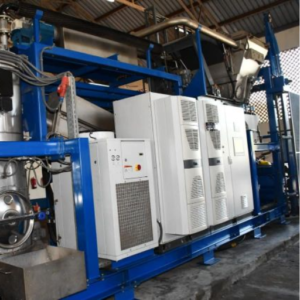
Microwave disinfection systems have numerous environmental advantages, making them a better option than conventional waste management methods. The first advantage is that this method is eco-friendly because it reduces the amount of greenhouse gas emissions in the atmosphere compared to incineration. The other thing that should be noted about microwave disinfection systems is that they reduce waste volumes, reduce pressure on landfills, and promote sustainable waste management practices. Moreover, by allowing treatment to occur at the premises where waste has been generated, they minimize transportation demands, thereby cutting down fuel requirements and their associated ecological effects. This approach also lowers the chances of pollution through leachate or ash disposal, thus providing further protection for nature. To sum up, microwave disinfection systems are instrumental in achieving greener healthcare approaches for managing waste within healthcare facilities.
Reduction in Waste Treatment Emissions
Microwave disinfection is characterized by reduced emissions in waste treatment than the traditional methods such as incineration. The systems work at lower temperatures and, as a result, do not burn the waste, significantly reducing harmful pollutants released, including carbon dioxide (CO2), dioxins, and mercury. Additionally, microwave disinfection brings about on-site handling, thereby minimizing the necessity for extensive waste transportation, reducing fuel consumption, and indirectly lowering carbon emissions. In addition to that, this innovative strategy is vital for reducing direct and indirect emissions, thus fostering sustainability and environmental friendliness within healthcare waste management.
Minimizing Environmental Footprint of Waste Disposal
To minimize the environmental footprint of waste disposal, adopting practices that reuse, reduce, and recycle whenever possible is crucial. This means prioritizing waste reduction at the source by selecting products with minimal packaging and promoting reusable items. Vital recycling programs can divert a significant amount of materials from landfills into the production of new items. Apart from reducing landfill burden, organic waste composting creates valuable soil amendments. Anaerobic digestion or advanced incineration with energy recovery are advanced technologies for treating/recycling non-recyclable/compostable trash and mitigating environmental impacts. Thus, combining these tactics can go a long way in minimizing the ecological footprint of waste disposal.
Contribution to Sustainable Waste Management Practices
To maintain the environment and improve public health, it is essential to implement sustainable waste management practices. Major strategies include reducing wastage at the generation site through responsible consumption and advocating for recyclable and decomposable materials. Recycling is a transformative tool where discarded objects are consumed through production to conserve nature. Composting helps you convert organic garbage into good compost, which can enrich soil nutrients obtained from food remains and yard rubbish. Other innovative techniques include anaerobic digestion, changing organic wastes into renewable energy sources, and nutrient-rich plant supplements. In contrast, modern incineration with energy recovery offers efficiency without harming the environment. Doing so can translate these practices towards a circular economy that limits waste while maximizing resource usage.
What Factors Should Be Considered When Implementing a Microwave Disinfection System?
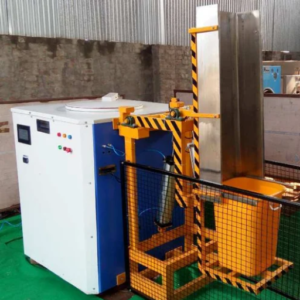
Several factors, however, are critical when implementing the microwave disinfection system to ensure its effectiveness and sustainability. First, the kind of waste treated is crucial as only medical and organic wastes, among others, are effectively treated using Microwave Disinfection. Second, energy consumption and efficiency must be assessed to be environmentally and economically viable. The third position is compliance with regulatory standards and guidelines; therefore, it should be looked into to ensure that the disinfection process meets health and safety requirements. Additionally, the installation and ongoing maintenance costs must be considered to ensure this technology is affordable for long-term use. Finally, there needs to be an assessment of potential by-products or residual waste to minimize environmental impact. All these factors must be considered for a microwave disinfection system to integrate successfully into waste management practices.
Necessary Infrastructure for Installation
Several key infrastructure elements are required to properly put in place a microwave disinfection system. To begin with, a dedicated space that observes health and safety regulations is essential; this should have appropriate ventilation and be well-designed concerning the specific type of waste being treated. Moreover, a robust electrical infrastructure is necessary for the system’s energy requirements, including any backup power solutions to ensure continuity of operations. Thirdly, waste storage facilities must be established to separate and hold waste before and after treatment to enhance smooth operation and less contamination. Additionally, if the system needs water supply and drainage systems, then it is obligatory to include them into the design. It is also essential that monitoring and control systems are incorporated to oversee the process of disinfection and ensure that all regulatory standards have been adhered to alongside operational efficiency.
Cost Implications and Budgeting
When installing a microwave disinfection system, this should be done with critical financial calculations requiring care. Initial costs include buying the machinery, arranging the installation area, and setting up the necessary infrastructure, which can be expensive. However, there are other expenses to consider besides the ones that happen immediately, such as continuous repairs and energy consumption, which need money throughout its lifespan as part of maintenance. It is also essential to have some funds set aside for potential repairs and replacement of parts to minimize downtime and maintain system efficiency. To better understand the financial implications, conducting a cost-benefit analysis in terms of return on investment (ROI) and explaining long-term costs that otherwise might not make sense may be helpful. Additionally, possible funding options such as grants, subsidies, or any other applicable financial incentives available for sustainable waste management solutions can often mitigate some of these fiscal burdens, making investments more feasible. It is possible to guarantee sustainability and effectiveness in running such systems over time through careful budgeting.
Compliance with Regulatory Standards
People should adhere to the set standards and regulations when developing a microwave disinfection system. This is important because it ensures the disinfection process’s safety, effectiveness, and legality. Some essential regulations must be considered in this case, including EPA, which insists on how solid waste should be handled and treated, and OSHA, which gives guidelines for worker protection during system operation and maintenance. Furthermore, DOT has rules on how treated waste should be transported. To comply with these measures a total documentation as well as regular audits plus continuous monitoring to meet up with established guidelines while at the same time maintain operational integrity is required. In addition to reducing legal risks, compliance bolsters the credibility and performance of the disinfection process.
Frequently Asked Questions (FAQs)
Q: What is medical waste disinfection?
A: Medical waste disinfection refers to eliminating or neutralizing infectious agents from medical waste to prevent the spreading of infection and disease.
Q: How does microwave disinfection technology work?
A: Microwave disinfection technology uses microwave irradiation to generate heat, effectively neutralizing infectious pathogens within medical waste, thus rendering it safe for disposal.
Q: What are the benefits of using a microwave disinfection system for treating medical waste?
A: Benefits of using a microwave disinfection system include efficient sterilization, reduced environmental impact, lower operational costs, and the ability to treat various types of medical waste, including solid waste and infectious waste.
Q: What is the difference between a traditional autoclave and a microwave waste disinfection system?
A: Unlike traditional autoclaves, which use steam under pressure, microwave waste disinfection systems use microwave irradiation to disinfect waste. This system can be more energy-efficient and faster and typically requires less water.
Q: Is microwave disinfection technology effective for all types of biomedical waste?
A: Yes, microwave disinfection technology is effective for various biomedical wastes, including solid waste, infectious medical waste, and hazardous waste. Its efficacy is comparable to that of other traditional disinfection methods.
Q: How is the treated waste disposed of after microwave disinfection treatment?
A: After microwave disinfection treatment, the treated waste is considered safe and non-infectious. It can be disposed of in regular waste containers or undergo further waste treatment processes as local regulations require.
Q: What are the components of a typical medical waste disinfection system that uses microwave technology?
A: A typical medical waste disinfection system using microwave technology includes a microwave generator, waste containers, a waste treatment chamber, and control systems to manage the disinfection process.
Q: Is microwave-based disinfection safe for laboratory and hospital environments?
A: Yes, microwave-based disinfection is safe for laboratory and hospital environments. The controlled microwave irradiation ensures thorough disinfection without releasing harmful substances.
Q: How does the effect of microwave disinfection compare to other disinfection methods?
A: Microwave disinfection is highly effective and can achieve similar or superior disinfection and sterilization results compared to other methods like autoclaving or chemical disinfection, making it a viable alternative for biomedical waste treatment.
Q: What future advancements are expected in microwave disinfection technology for medical waste?
A: Future advancements may include improved microwave generators for better energy efficiency, enhanced automation for the disinfection process, and integration with other waste handling and treatment systems to create comprehensive medical refuse microwave disinfection systems.













